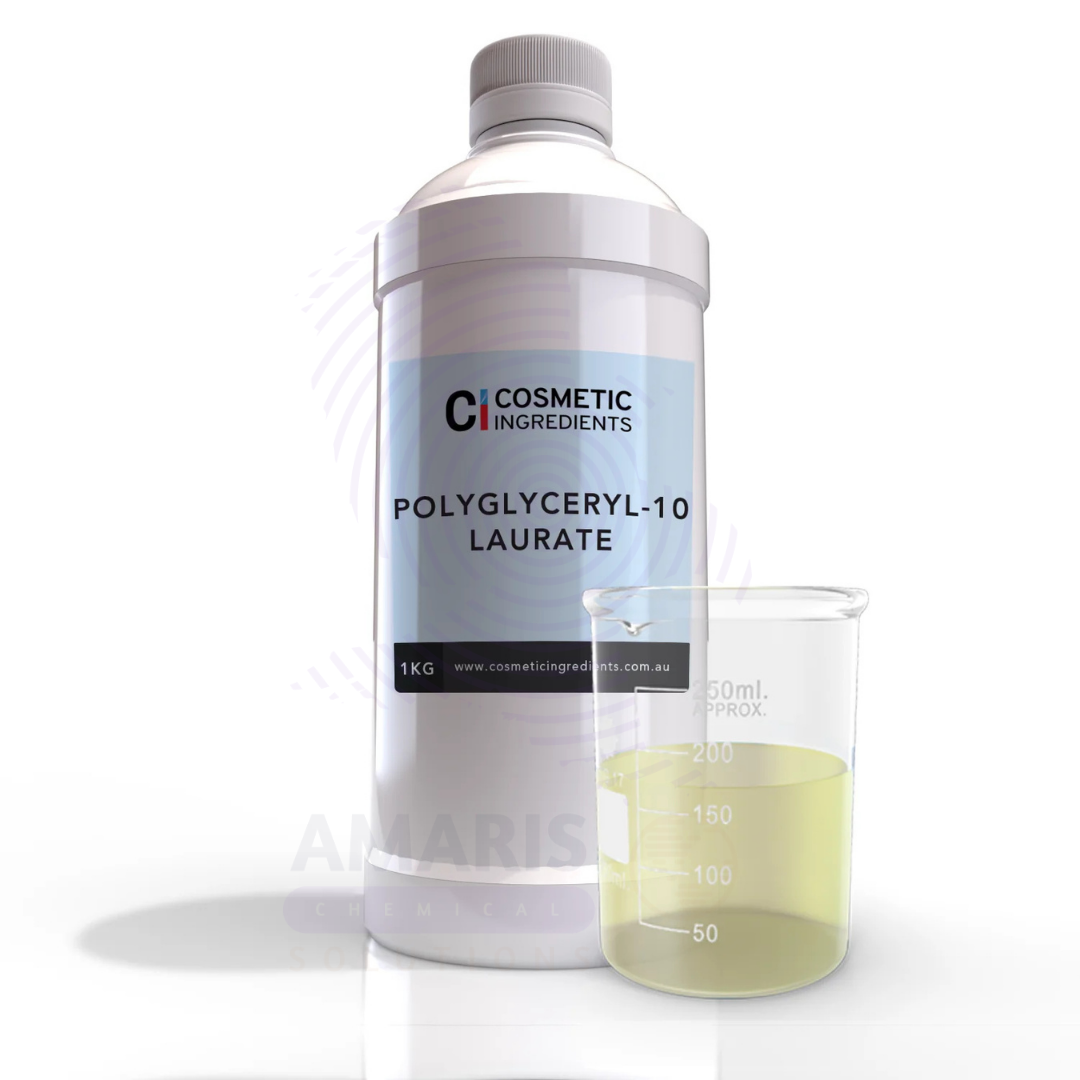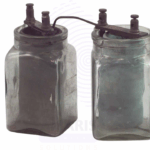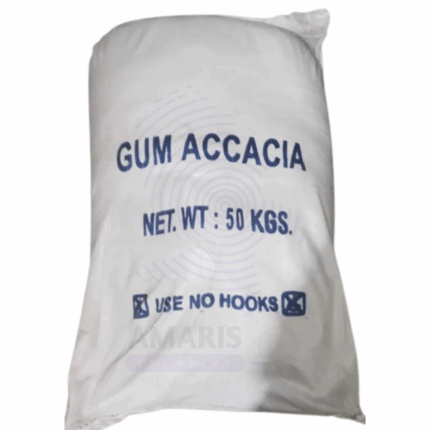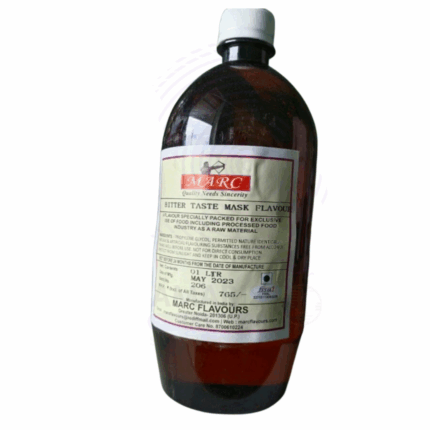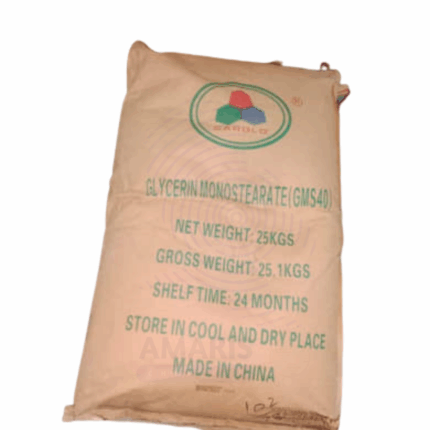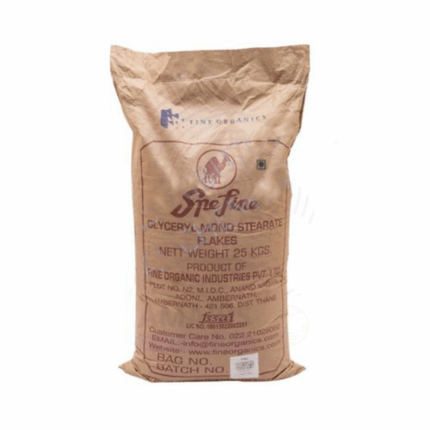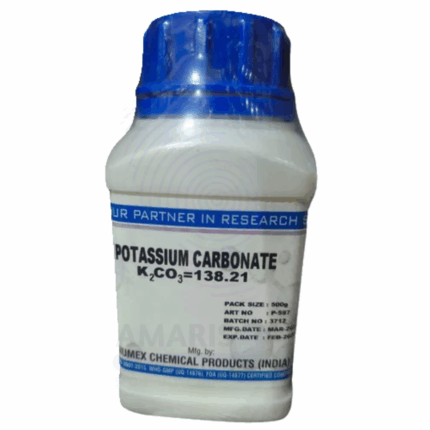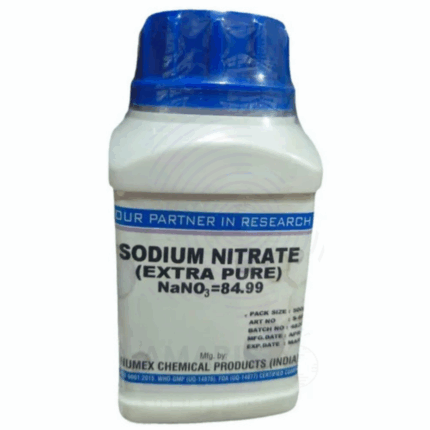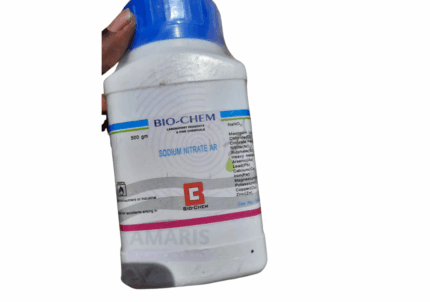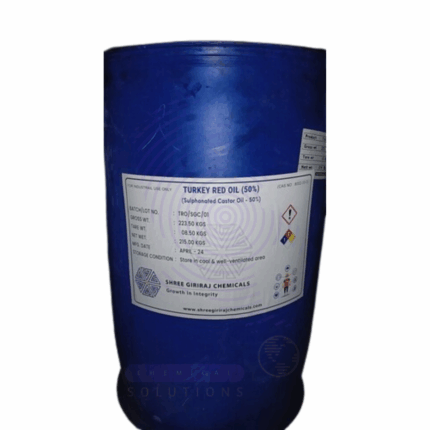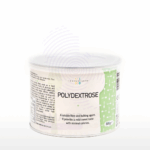
Polyglycerol-10-Laurate Extra Pure
$ 19.20
Polyglycerol-10-laurate Extra Pure is a high-purity, non-ionic surfactant and emulsifier composed of ten glycerol units esterified with lauric acid. This versatile compound is especially valued in cosmetic, pharmaceutical, and food-grade applications where ultra-high purity and biocompatibility are critical.
Known for its excellent emulsifying, dispersing, and solubilizing properties, Polyglycerol-10-laurate is widely used in formulations for creams, lotions, and other personal care products, particularly those designed for sensitive skin. In pharmaceuticals, it aids in enhancing bioavailability and improving the stability of active ingredients, while in food applications, it serves as a safe emulsifier and texturizer, often used in dairy and confectionery products.
Polyglycerol-10-Laurate Extra Pure
PRIMARY USES
- Cosmetic & Personal Care Industry:
- Functions as a non-ionic emulsifier, helping to blend oil and water in creams, lotions, and gels.
- Acts as a mild surfactant and skin-conditioning agent, ideal for sensitive skin formulations.
- Used in products like moisturizers, cleansers, makeup, and sunscreens.
- Food Industry (under food-grade standards):
- Utilized as an emulsifying agent in processed foods such as baked goods, dressings, and dairy alternatives.
- Helps improve texture, stability, and mouthfeel in emulsified food systems.
SECONDARY USES
- Pharmaceutical Industry:
- Occasionally used in topical drug delivery systems as an emulsifier or solubilizer.
- Enhances the absorption of active pharmaceutical ingredients in dermal formulations.
- Industrial Applications:
- Applied in eco-friendly cleaning agents due to its biodegradability and mild surfactant nature.
- Used in water-based lubricant formulations and specialty emulsions.
1. Basic Identification Attributes
- Chemical Name: Polyglyceryl-10 laurate
- CAS Number: 34406-66-1
- HS Code: 3402.13.00
- Molecular Formula: C₃₃H₆₄O₁₈ (representative, varies with polymerization)
- Synonyms:
- Decaglyceryl monolaurate
- Polyglycerin-10 monolaurate
- Polyglyceryl laurate
- E475 (as an emulsifier, general category)
2. Physical & Chemical Properties
- Physical State: Liquid to soft paste (depending on purity and temperature)
- Color & Odor: Pale yellow to amber; mild fatty or characteristic odor
- Boiling Point & Melting Point:
- Boiling Point: Not well defined (polymeric)
- Melting Point: Softens around 25–35 °C
- Density/Specific Gravity: ~1.05 g/cm³
- Solubility:
- Soluble in alcohols and oils
- Dispersible or partially soluble in water
- pH Level: ~5.0–7.5 (in emulsion)
- Vapor Pressure & Volatility: Negligible
- Flash Point: >150 °C (closed cup)
- Autoignition Temperature: >300 °C (estimated)
- Viscosity: Medium to high viscosity at room temperature
3. Safety & Hazard Attributes
- Hazard Class (GHS Classification):
- Not classified as hazardous
- NFPA Ratings:
- Health: 0
- Flammability: 1
- Reactivity: 0
- Exposure Limits:
- No established occupational exposure limits
- Reactivity:
- Stable under normal storage conditions
- Avoid strong oxidizing agents
4. Storage & Handling Attributes
- Storage Conditions:
- Store in a cool, dry place away from sunlight
- Recommended temperature: 15–25 °C
- Incompatible Materials:
- Strong oxidizers, acids
- Container Type:
- Food-grade plastic or metal drums, tightly sealed
- Shelf Life & Expiration Date:
- Typically 2 years when unopened
- Special Handling Requirements:
- Avoid contact with eyes and prolonged skin exposure
- Use gloves and eye protection for bulk handling
5. Regulatory & Compliance Attributes
- Regulatory Status:
- Approved for use in food, cosmetics, and pharmaceuticals
- Listed in EU (CosIng), FDA (as GRAS for certain uses)
- Hazard Symbols (GHS Pictograms):
- None required under normal conditions
- Transportation Restrictions:
- Not regulated for transport
- Waste Disposal Method:
- Dispose of in accordance with local environmental regulations
- Considered non-hazardous waste
6. Environmental & Health Impact
- Ecotoxicity:
- Low aquatic toxicity
- Persistence in Environment:
- Biodegradable
- Carcinogenicity/Mutagenicity:
- Not classified as carcinogenic or mutagenic
- Biodegradability:
- Readily biodegradable under aerobic conditions
SAFETY PRECAUTIONS
Personal Protective Equipment (PPE):
- Wear protective gloves (e.g., nitrile).
- Use safety goggles to prevent eye contact.
- Wear a lab coat to avoid skin exposure.
- Use appropriate respiratory protection if handling in aerosolized or powdered form.
Handling:
- Avoid breathing vapors or contact with eyes and skin.
- Work in a well-ventilated area.
- Practice good hygiene—wash hands thoroughly after use.
- Do not ingest or inhale.
Storage:
- Store in a tightly closed container in a cool, dry, well-ventilated area.
- Protect from moisture, heat, and direct sunlight.
- Keep away from incompatible substances like strong oxidizing agents.
FIRST AID MEASURES
Inhalation:
- Move the person to fresh air.
- Seek medical attention if symptoms like coughing or dizziness persist.
Skin Contact:
- Wash the affected area with soap and water.
- Remove contaminated clothing.
- Seek medical advice if irritation develops.
Eye Contact:
- Rinse eyes thoroughly with plenty of water for at least 15 minutes.
- Seek medical attention if irritation continues.
Ingestion:
- Rinse mouth with water.
- Do not induce vomiting.
- Seek medical attention if feeling unwell.
FIRE FIGHTING MEASURES
Flammability:
- Not highly flammable but may burn under intense heat.
Extinguishing Media:
- Use water spray, dry chemical, foam, or CO₂.
Hazardous Combustion Products:
- May release carbon monoxide (CO), carbon dioxide (CO₂), and other irritating fumes.
Firefighter Protection:
- Use full protective gear and self-contained breathing apparatus (SCBA).
- Avoid inhalation of combustion fumes.


 Preservatives(food)
Preservatives(food) Flavor Enhancers
Flavor Enhancers Acidulants
Acidulants Sweeteners
Sweeteners Antioxidants
Antioxidants Colorants(food)
Colorants(food) Nutraceutical Ingredients (food)
Nutraceutical Ingredients (food) Nutrient Supplements
Nutrient Supplements Emulsifiers
Emulsifiers
 Collectors
Collectors Dust Suppressants
Dust Suppressants Explosives and Blasting Agents
Explosives and Blasting Agents Flocculants and Coagulants
Flocculants and Coagulants Frothers
Frothers Leaching Agents
Leaching Agents pH Modifiers
pH Modifiers Precious Metal Extraction Agents
Precious Metal Extraction Agents
 Antioxidants(plastic)
Antioxidants(plastic) Colorants (Pigments, Dyes)
Colorants (Pigments, Dyes) Fillers and Reinforcements
Fillers and Reinforcements Flame Retardants
Flame Retardants Monomers
Monomers Plasticizers
Plasticizers Polymerization Initiators
Polymerization Initiators Stabilizers (UV, Heat)
Stabilizers (UV, Heat)
 Antifoaming Agents
Antifoaming Agents Chelating Agents
Chelating Agents Coagulants and Flocculants
Coagulants and Flocculants Corrosion Inhibitors
Corrosion Inhibitors Disinfectants and Biocides
Disinfectants and Biocides Oxidizing Agents
Oxidizing Agents pH Adjusters
pH Adjusters Scale Inhibitors( water)
Scale Inhibitors( water)
 Antioxidants(cosmetic)
Antioxidants(cosmetic) Emollients
Emollients Fragrances and Essential Oils
Fragrances and Essential Oils Humectants
Humectants Preservatives
Preservatives Surfactants(cosmetic)
Surfactants(cosmetic) Thickeners
Thickeners UV Filters
UV Filters
 Fertilizers
Fertilizers Soil Conditioners
Soil Conditioners Plant Growth Regulators
Plant Growth Regulators Animal Feed Additives
Animal Feed Additives Biostimulants
Biostimulants Pesticides (Herbicides, Insecticides, Fungicides)
Pesticides (Herbicides, Insecticides, Fungicides)
 Active Pharmaceutical Ingredients (APIs)
Active Pharmaceutical Ingredients (APIs) Excipients
Excipients Solvents(pharmaceutical)
Solvents(pharmaceutical) Antibiotics
Antibiotics Antiseptics and Disinfectants
Antiseptics and Disinfectants Vaccine Adjuvants
Vaccine Adjuvants Nutraceutical Ingredients (pharmaceutical)
Nutraceutical Ingredients (pharmaceutical) Analgesics & Antipyretics
Analgesics & Antipyretics
 Analytical Reagents
Analytical Reagents Solvents(lab)
Solvents(lab) Chromatography Chemicals
Chromatography Chemicals Spectroscopy Reagents
Spectroscopy Reagents microbiology-and-cell-culture-reagents
microbiology-and-cell-culture-reagents Molecular Biology Reagents
Molecular Biology Reagents Biochemical Reagents
Biochemical Reagents Inorganic and Organic Standards
Inorganic and Organic Standards Laboratory Safety Chemicals
Laboratory Safety Chemicals Specialty Laboratory Chemicals(Special Laboratory Equipment)
Specialty Laboratory Chemicals(Special Laboratory Equipment)
 Demulsifiers
Demulsifiers Hydraulic Fracturing Fluids
Hydraulic Fracturing Fluids Scale Inhibitors(oil)
Scale Inhibitors(oil) Surfactants(oil)
Surfactants(oil) Drilling Fluids
Drilling Fluids
 Dyes and Pigments
Dyes and Pigments Bleaching Agents
Bleaching Agents Softening Agents
Softening Agents Finishing Agents
Finishing Agents Antistatic Agents
Antistatic Agents
 Admixtures
Admixtures Waterproofing Agents
Waterproofing Agents Sealants and Adhesives
Sealants and Adhesives Curing Compounds
Curing Compounds Concrete Repair Chemicals
Concrete Repair Chemicals Anti-Corrosion Coatings
Anti-Corrosion Coatings
 Surfactants(cleaning)
Surfactants(cleaning) Builders
Builders Enzymes
Enzymes Solvents (Cleaning)
Solvents (Cleaning) Fragrances
Fragrances
 Electronic Chemicals
Electronic Chemicals Catalysts
Catalysts Lubricants
Lubricants Photographic Chemicals
Photographic Chemicals Refrigerants
Refrigerants Automotive chemicals
Automotive chemicals Pyrotechnic Chemicals
Pyrotechnic Chemicals
 Biodegradable Surfactants
Biodegradable Surfactants Bio-based Solvents
Bio-based Solvents Renewable Polymers
Renewable Polymers Carbon Capture Chemicals
Carbon Capture Chemicals Wastewater Treatment Chemicals
Wastewater Treatment Chemicals
 Pigments
Pigments Solvents(paint)
Solvents(paint) Specialty Coatings
Specialty Coatings Binders/Resins
Binders/Resins Additives
Additives Driers
Driers Anti-Corrosion Agents
Anti-Corrosion Agents Functional Coatings
Functional Coatings Application-Specific Coatings
Application-Specific Coatings
 Fresh Herbs
Fresh Herbs Ground Spices
Ground Spices Whole Spices
Whole Spices Spice Blends
Spice Blends Dried Herbs
Dried Herbs
 Leavening Agents
Leavening Agents Dough Conditioners
Dough Conditioners Flour Treatments
Flour Treatments Fat Replacers
Fat Replacers Decoratives
Decoratives Preservatives(baking)
Preservatives(baking)
 Plasticizers & Softeners
Plasticizers & Softeners Reinforcing Agents
Reinforcing Agents Adhesion Promoters
Adhesion Promoters Vulcanizing Agents
Vulcanizing Agents Antidegradants
Antidegradants Blowing Agents
Blowing Agents Fillers & Extenders
Fillers & Extenders Accelerators & Retarders
Accelerators & Retarders